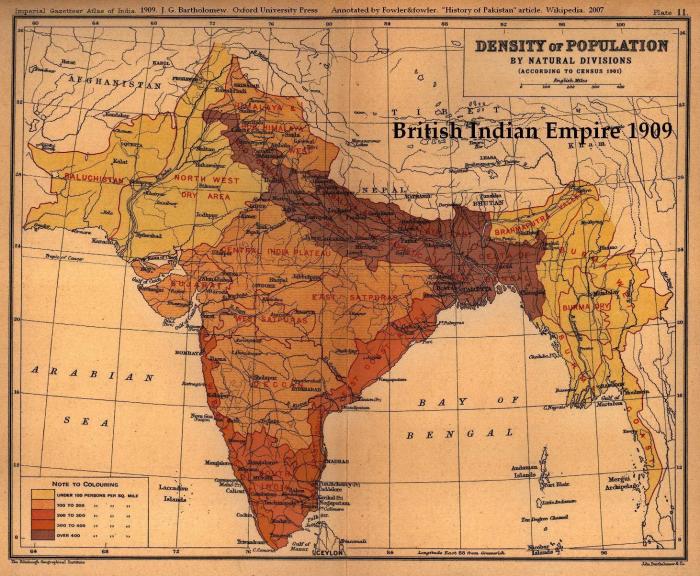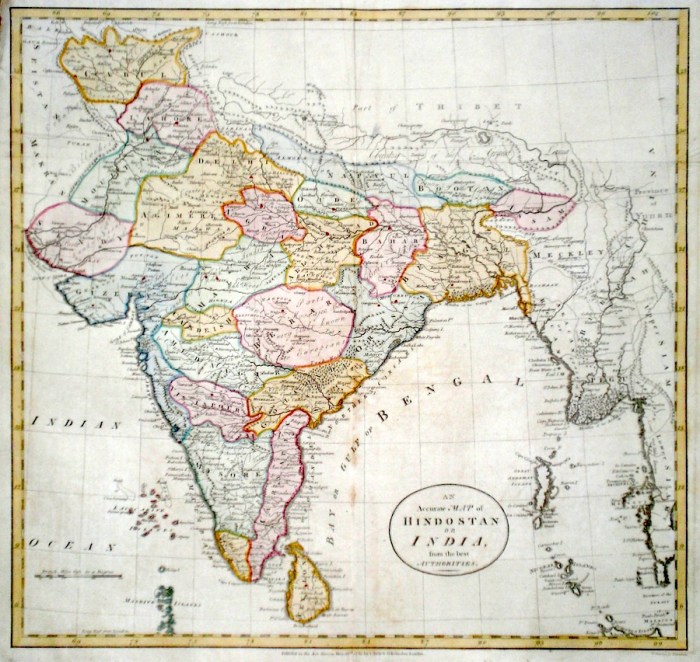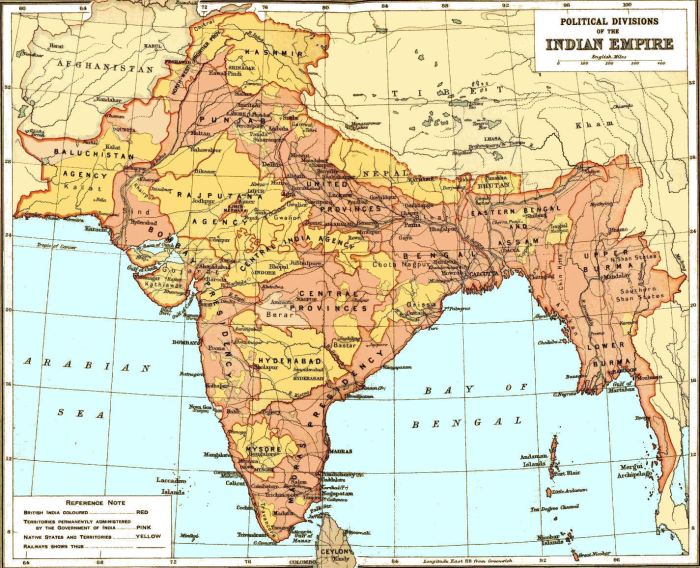Map of ancient India with labels unrolls the captivating panorama of a bygone era, inviting us to explore the intricate tapestry of its history, geography, and cultural legacy. This comprehensive guide unravels the grandeur of ancient India, offering a profound understanding of its enduring significance in shaping the world as we know it.
From the sprawling empires that ruled the subcontinent to the vibrant cultures that flourished within its borders, map of ancient India with labels unveils a captivating narrative that transports readers to a realm of historical wonder.
Historical Significance
Ancient India, the birthplace of some of the world’s oldest civilizations, played a pivotal role in shaping human history. From the fertile plains of the Indus Valley to the vibrant cities of the Ganges basin, ancient India was a hub of innovation, culture, and intellectual advancement.
The historical significance of ancient India can be attributed to its contributions in various fields:
Empires and Kingdoms
Ancient India witnessed the rise and fall of numerous empires and kingdoms, each leaving a lasting impact on the region’s political and cultural landscape.
- Indus Valley Civilization (c. 2600-1900 BCE):The earliest known urban civilization in South Asia, renowned for its advanced city planning, sanitation systems, and standardized weights and measures.
- Mauryan Empire (c. 322-185 BCE):Founded by Chandragupta Maurya, the Mauryan Empire was one of the largest and most powerful empires in ancient India, known for its centralized administration and territorial expansion.
- Gupta Empire (c. 320-550 CE):Known as the “Golden Age of India,” the Gupta Empire witnessed a flourishing of art, literature, and scientific advancements.
- Pallava Kingdom (c. 275-897 CE):A South Indian kingdom that made significant contributions to Dravidian architecture and literature.
- Chola Empire (c. 848-1279 CE):A powerful maritime empire based in South India, known for its naval prowess and extensive trade networks.
Geographical Features

Ancient India, a land of diverse landscapes, was shaped by its unique physical geography. From towering mountain ranges to fertile river valleys, the region’s topography played a significant role in its history and development.
Major Rivers:Ancient India was blessed with a network of mighty rivers, including the Indus, Ganges, and Brahmaputra. The Indus River, flowing through the northwest, supported the flourishing Indus Valley Civilization. The Ganges, considered sacred in Hinduism, flowed through the northern plains, nurturing fertile agricultural lands.
The Brahmaputra, originating in Tibet, formed the eastern boundary of ancient India and provided a vital waterway for trade and transportation.
Mountain Ranges, Map of ancient india with labels
Ancient India was bordered by two major mountain ranges: the Himalayas and the Vindhyas. The Himalayas, the world’s highest mountain range, formed a formidable barrier in the north, separating India from Central Asia. The Vindhyas, running east-west across central India, divided the subcontinent into northern and southern regions.
Climate Zones
Ancient India experienced a wide range of climate zones. The northern plains had a humid subtropical climate, with hot, wet summers and mild winters. The Deccan Plateau, located in central India, had a tropical savanna climate, characterized by alternating wet and dry seasons.
The coastal regions had a tropical monsoon climate, with heavy rainfall during the monsoon season.
Cultural Diversity
Ancient India was a melting pot of diverse cultures and religions, reflecting the vast expanse of its geography and the rich tapestry of its history. The Harappan civilization, which flourished in the Indus Valley from 2600 to 1900 BCE, left behind evidence of a highly advanced urban society with a complex religious system.
The Vedic period (1500-500 BCE) witnessed the rise of Hinduism, with its pantheon of gods and goddesses and the development of the caste system. Buddhism and Jainism emerged in the 6th century BCE, offering alternative spiritual paths.
Religious Pluralism
- Hinduism, with its vast pantheon of gods and goddesses, was the dominant religion of ancient India.
- Buddhism, founded by Siddhartha Gautama, emphasized the importance of non-violence and compassion.
- Jainism, founded by Mahavira, promoted ahimsa (non-violence) and self-control.
Artistic Expression
The cultural diversity of ancient India was reflected in its artistic expression. The Harappan civilization produced sophisticated seals and pottery, while the Vedic period saw the development of elaborate rituals and hymns. Buddhist and Jain art flourished during the Mauryan Empire (322-185 BCE), with the construction of stupas and temples.
The Gupta period (320-550 CE) witnessed a golden age of Indian art, with the creation of exquisite sculptures, paintings, and architecture.
Political Boundaries

Ancient India was a land of diverse political entities, with numerous kingdoms and empires rising and falling over time. The political boundaries of these entities were often fluid, changing with the fortunes of war and the rise and fall of dynasties.
The following table Artikels some of the major political boundaries of ancient India, along with their approximate extent and duration:
Major Political Boundaries of Ancient India
| Kingdom/Empire | Extent | Duration |
|---|---|---|
| Maurya Empire | Most of the Indian subcontinent, from Afghanistan to Bengal | 322-185 BCE |
| Gupta Empire | Northern India, from the Indus River to the Bay of Bengal | 320-550 CE |
| Kushan Empire | Northern India, Central Asia, and parts of Afghanistan | 1st-3rd centuries CE |
| Satavahana Empire | Deccan Plateau | 230 BCE-220 CE |
| Chola Empire | Southern India, Sri Lanka, and parts of Southeast Asia | 3rd century BCE-13th century CE |
Trade and Commerce

Trade and commerce played a significant role in the development of ancient India. The country’s strategic location on the crossroads of major trade routes made it a hub for the exchange of goods and ideas.
The major trade routes included the Silk Road, which connected India to China, Central Asia, and Europe, and the Indian Ocean trade route, which linked India to Southeast Asia, the Middle East, and Africa.
Goods Traded
The goods traded along these routes included spices, textiles, precious stones, metals, and agricultural products.
- Spices: India was a major exporter of spices such as pepper, cinnamon, and cloves.
- Textiles: Indian textiles, particularly cotton and silk, were highly prized in other parts of the world.
- Precious stones: India was a source of precious stones such as diamonds, rubies, and emeralds.
- Metals: India exported metals such as iron, copper, and gold.
- Agricultural products: India exported agricultural products such as rice, wheat, and sugar.
Archaeological Discoveries

Archaeological discoveries have played a pivotal role in reconstructing the history of ancient India. Excavations at various sites across the country have unearthed invaluable artifacts, structures, and inscriptions that have shed light on the cultural, social, and economic aspects of ancient Indian civilization.One
of the most significant archaeological discoveries in India is the Indus Valley Civilization. Excavations at Harappa and Mohenjo-daro revealed a highly advanced urban civilization that flourished around 2600-1900 BCE. The discovery of planned cities, sophisticated drainage systems, and a written script has provided valuable insights into the social organization, technological advancements, and cultural practices of this ancient civilization.Another
important archaeological discovery is the Mauryan Empire. Excavations at Pataliputra, the capital of the Mauryan Empire, have revealed the grandeur and opulence of this ancient empire. The discovery of the Ashokan pillars, with their edicts inscribed in Brahmi script, has provided valuable information about the political, administrative, and religious policies of the Mauryan rulers.Excavations
at Sanchi and Bharhut have uncovered magnificent Buddhist stupas and monasteries. These archaeological discoveries have provided insights into the development of Buddhism in ancient India and the artistic and architectural styles of the period.Archaeological methods and techniques used in these excavations include excavation, survey, and analysis of artifacts.
Excavation involves the careful removal of soil and other materials to expose archaeological features and artifacts. Survey involves the systematic examination of an area to identify and record archaeological sites. Analysis of artifacts involves the study of the materials, techniques, and styles used in their creation, providing valuable insights into the cultural and technological development of ancient India.
Historical Impact: Map Of Ancient India With Labels

Ancient India has left an enduring mark on the course of world history. Its civilizations and cultures flourished for millennia, making significant contributions to science, mathematics, literature, and philosophy.
The ancient Indians made pioneering discoveries in astronomy and mathematics. They developed the concept of zero, the decimal system, and the Pythagorean theorem. Their astronomical observations led to the creation of accurate calendars and the identification of constellations and planets.
Scientific Contributions
- Concept of zero and decimal system
- Pythagorean theorem
- Accurate calendars and astronomical observations
Ancient Indian literature, particularly the Vedas and the epics, has had a profound influence on world literature. The Vedas, a collection of hymns and rituals, provide insights into the religious beliefs and practices of ancient India. The epics, such as the Mahabharata and the Ramayana, are renowned for their literary brilliance and philosophical depth.
Literary Contributions
- Vedas: religious beliefs and practices
- Mahabharata and Ramayana: literary brilliance and philosophical depth
User Queries
What are the major empires that existed in ancient India?
The Mauryan Empire, Gupta Empire, and Mughal Empire were among the most prominent empires that ruled over ancient India.
What were the major trade routes in ancient India?
The Silk Road, Grand Trunk Road, and Malabar Coast were important trade routes that connected India with other parts of Asia and the world.
What are some of the significant archaeological discoveries that have shed light on ancient India?
Excavations at Mohenjo-daro, Harappa, and Taxila have provided valuable insights into the Indus Valley Civilization and other ancient Indian cultures.
